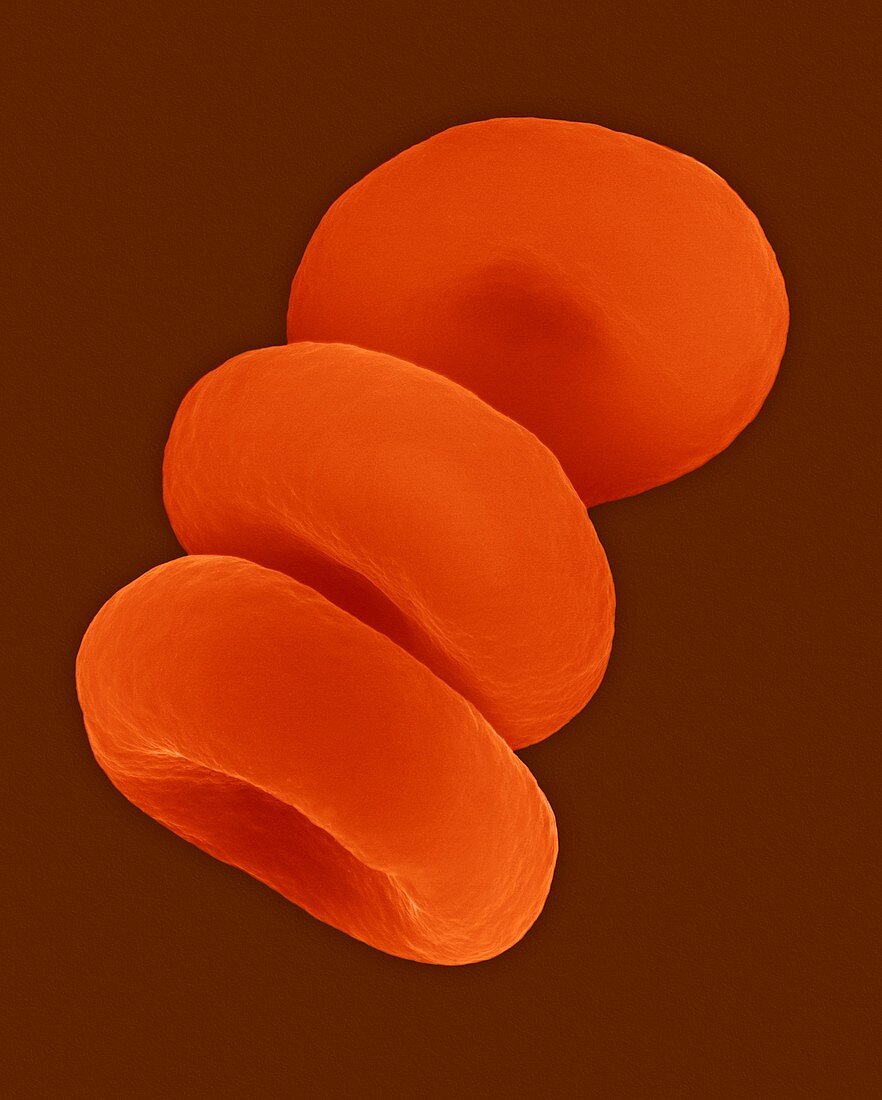Red blood cells in the Rouleau formation, SEM
Bildnummer 12297472

| Red blood cells in the Rouleau formation, coloured scanning electron micrograph (SEM). Red blood cells are often stacked together because of their shape and the way they pass through tiny capillaries. They are the most abundant type of cell in human blood, accounting for 40% of the blood volume. Each cubic millimetre of blood contains around five million of these tiny, flexible disc-shaped cells. The red colour comes from the iron-containing protein haemoglobin, which picks up oxygen in the lungs and distributes it around the body. Because the cells have no nucleus and are subjected to constant physical action, they last only four months before being destroyed and broken down. Magnification: x2, 000 when shortest axis printed at 25 millimetres. | |
| Lizenzart: | Lizenzpflichtig |
| Credit: | Science Photo Library / DENNIS KUNKEL MICROSCOPY |
| Bildgröße: | 2647 px × 3301 px |
| Modell-Rechte: | nicht erforderlich |
| Eigentums-Rechte: | nicht erforderlich |
| Restrictions: | - |
Preise für dieses Bild ab 15 €
Universitäten & Organisationen
(Informationsmaterial Digital, Informationsmaterial Print, Lehrmaterial Digital etc.)
ab 15 €
Redaktionell
(Bücher, Bücher: Sach- und Fachliteratur, Digitale Medien (redaktionell) etc.)
ab 30 €
Werbung
(Anzeigen, Aussenwerbung, Digitale Medien, Fernsehwerbung, Karten, Werbemittel, Zeitschriften etc.)
ab 55 €
Handelsprodukte
(bedruckte Textilie, Kalender, Postkarte, Grußkarte, Verpackung etc.)
ab 75 €
Pauschalpreise
Rechtepakete für die unbeschränkte Bildnutzung in Print oder Online
ab 495 €
